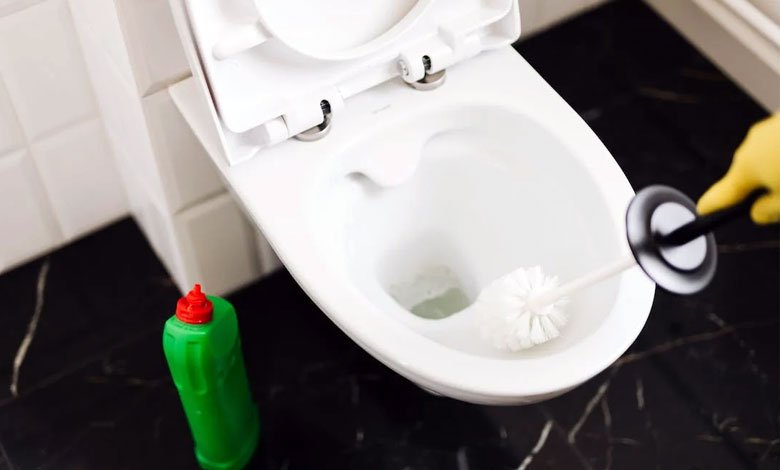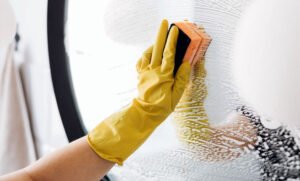Understanding the Different Types of Stains
When it comes to banishing unsightly stains from washroom surfaces, understanding the different types of stains is crucial. This knowledge empowers us to choose the right cleaning products and techniques for effective stain removal.
One common type of stain is mineral deposits, which are often caused by hard water. These deposits can leave behind a cloudy residue on bathroom fixtures and glass surfaces. To remove this type of stain, using a descaling agent specifically designed for mineral buildup is recommended.
Another common stain found in washrooms is rust. Rust stains are typically caused by metal fixtures or pipes that have oxidized over time. Removing rust stains requires the use of acid-based products that break down the iron oxide compounds. However, caution should be exercised when using acidic cleaners as they can damage certain surfaces like marble or stone.
By identifying the specific type of stain present in your washroom, you can employ targeted cleaning methods for optimal results. Understanding whether you’re dealing with mineral deposits or rust helps ensure you choose the appropriate cleansers and prevent any unnecessary damage to surfaces. Armed with this knowledge, banishing unsightly stains becomes much more manageable and efficient – leaving your washroom looking spotless and refreshed every time.
Choosing the Right Cleaning Products and Tools
First, you need to think about the specific surfaces or materials that you will be cleaning. Different surfaces may require different types of cleaners to avoid damage or discoloration.
For example, hardwood floors may need a gentle cleaner specifically designed for wood, while bathroom tiles may benefit from a stronger disinfectant.
Finally, think about the effectiveness and efficiency of the cleaning tools you choose. Microfiber cloths and mop heads are known for their ability to attract and trap dust and dirt effectively, while a vacuum cleaner with various attachments can make reaching tight corners or high shelves easier. By considering these factors, you can ensure that you are using the right products and tools for your specific cleaning needs.
Step-by-Step Guide to Removing Common Stains
Step 1: Coffee Stains on Countertops Coffee stains may be a common occurrence in the washroom, especially on countertops.
Rinse thoroughly and dry the countertop with a clean towel.
Step 2: Ink Stains on Bathroom Tiles Ink stains can be quite stubborn to remove from bathroom tiles, but there is an effective solution! Begin by pouring rubbing alcohol onto a clean cloth or cotton ball. Dab the ink stain gently; avoid rubbing too vigorously as this might spread the ink further. If necessary, repeat this process until most of the ink has been loosened from the tile surface. Next, create a mixture of warm water and dish soap – add enough soap so that it forms mild suds when stirred vigorously. Use this mixture to wash off any remaining residue from the affected area.
Step 3: Rust Stains on Sinks Rust stains are not only unsightly but also tough to tackle in washrooms where metal fixtures are frequently exposed to water and humidity.
Preventative Measures to Avoid Future Stains
In addition to effectively removing stains from washroom surfaces, it is equally important to take preventative measures to avoid future stains. By being proactive and implementing simple habits, you can prolong the cleanliness of your washroom and reduce the need for frequent stain removal. One effective preventive measure is regular cleaning and maintenance. By consistently cleaning washroom surfaces with appropriate disinfectants, you not only eliminate existing bacteria but also prevent new stains from forming. Additionally, keeping surfaces dry after each use can significantly reduce the chances of any lingering moisture causing mold or mildew which can lead to stubborn stains. Another practical measure is using protective coatings. Applying products such as sealants or protective wax on washroom floors and countertops creates a barrier against spills and stains.
Troubleshooting Stubborn Stains and Discoloration
Stubborn stains and discoloration on washroom surfaces can be a major headache when it comes to upkeep and maintenance. Whether it’s rust, hard water stains, or mold and mildew, dealing with these unsightly marks requires a strategic approach. One effective method for banishing stubborn stains is to use a combination of natural remedies like vinegar or lemon juice along with some gentle scrubbing. These acidic solutions work wonders in breaking down mineral deposits and lifting away surface discoloration without causing damage to the underlying material.
Another unique approach to tackling stubborn stains is the power of steam cleaning. Steam not only kills bacteria but also helps in loosening tough grime, making it easier to remove even the most persistent stains. Investing in a good quality steam cleaner can be a game-changer when it comes to maintaining a spotless washroom. Additionally, using products specifically designed for stain removal can provide targeted solutions for different types of stains, ensuring maximum effectiveness while minimizing effort on your part.
Remember that prevention is also key when it comes to keeping your washroom surfaces free from stubborn stains and discoloration. Regular cleaning routines using mild cleaners can help prevent buildup and make future stain removal much easier. And if you find yourself facing particularly stubborn marks despite your efforts, don’t hesitate to seek professional help or advice – sometimes an expert eye may be just what you need to banish those unsightly blemishes for good! So why wait?
Conclusion:
In conclusion, maintaining spotless and hygienic washroom surfaces is of utmost importance for the health and well-being of all individuals who utilize these facilities. Together, we can make a difference in promoting good hygiene practices and providing a pleasant washroom experience for all.



